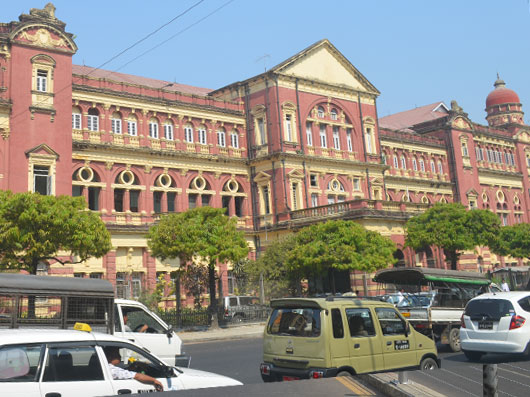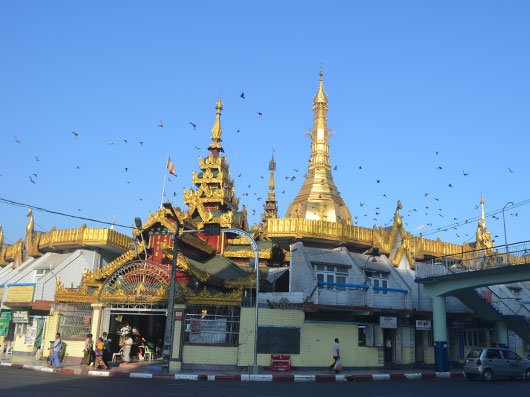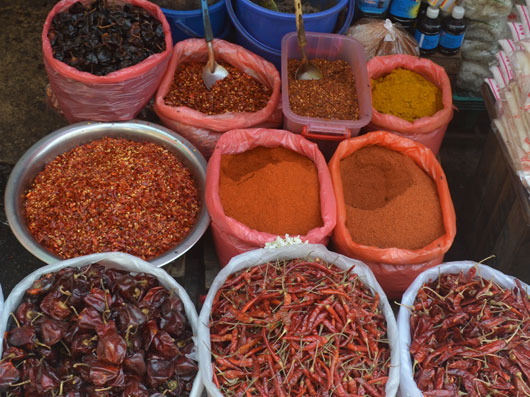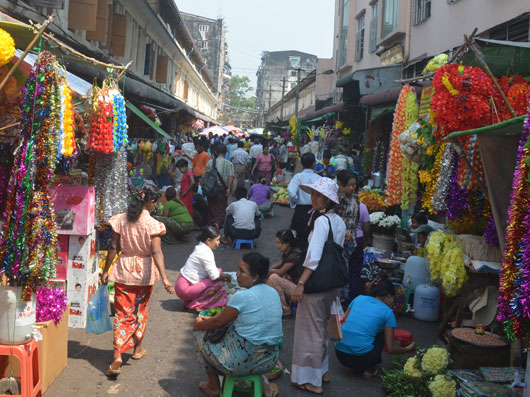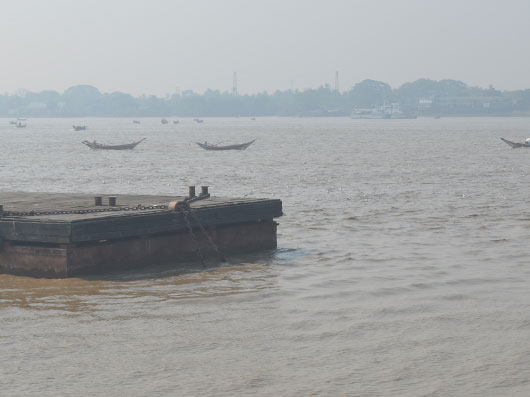The perfect way to explore Yangon is by foot. This colonial style city is great to wander through and you’ll encounter a myriad of different cultures in a small area.
Yangon was originally a fishing village at the intersection of three rivers’ the Bago, Yangon and Hlaing rivers, it sprouted up around the Shwedagon Pagoda. Slightly out of town up Singuttara Hill, is the famous Shwedagon Pagoda is situated, are lush parks, gardens and lakes creating a wonderful recreational zone. It was formerly known as Rangoon, in 1989 a lot of the colonial English names, including Rangoon, were changed. Though occasionally people still refer to it as Rangoon.
Start your day at The Strand, one of the most iconic hotels in Yangon. It was built in 1901 and has seen a few changes over the years as Yangon has evolved into the city it is today. Charming and elegant, it is a lovely place for coffee or high tea. Take a calm retreat before a busy day of exploring. Loop back here later to enjoy their famous Strand Sour.
Walk out of The Strand and enjoy the colonial buildings along the waterfront. The British Embassy, Victorian Post Office, Court of Justice and many other grand buildings that parade along this strip. Yangon is at the junction of 3 significant rivers, as such there are many boats servicing the port. Watch the local ferries coming and going from the four jetties along the port. There are also tourist boat trips to the nearby Irrawaddy River.
Walk along the coastal road until you get to the junction heading toward the Sule Pagoda. It’s right in the heart of the city, and it’s said that this stupa (or pagoda) was built during the time of Buddha and before the Shwedagon Pagoda was even built. This would make it more than 2,500 years old! It has been a place of significance for political rallies and the like and is the central point of the city.
Head west of the Sule Pagoda and you’ll enter China Town. Established in the 1850s, it is now a bustle of street stalls, market stands, cyber cafes, clothing stores, jewellery merchants and a huge variety of food. There is a huge array of fresh fruit, snacks, and more substantial meals steaming in pots and on sizzling fires.
There are also many Chinese temples, with impressive facades and they are worth admiring while you’re in the area. Be mindful to dress respectfully if you decide to enter a temple. During Chinese New Year (around January or February each year depending on the Chinese Lunar Calendar), lanterns and lights are strung up in abundance and traditional ceremonies and celebrations take place.
From here, head east of 15th street to the next stop, Little India. You’ll find it nestled in a very busy and bustling alleyway with lots of hidden delights. Stalls selling colourfully packaged spices will inspire your inner cook! There are also lots of paan sellers, a red chewing tobacco, which is very much an acquired taste! There are several Hindu temples, and close by plenty of flower sellers to get something to give religious offerings. It’s okay to visit the temples, again dress respectfully and make sure you remove your shoes before entering.
Leave Little India and walk to Bo Gyoke Street where there is the Bogyoke (general) Aung San Market, also called Scott’s Market. Located in another magnificent colonial building this is the grand bazaar of Yangon. Sellers have all manner of items for sale; food, household goods, medicine, clothing, handicrafts, art galleries and jewellers. There are also many antique shops with coins, stamps and other interesting trinkets. Get lost in the history and treasures; the market is open from 0900 until 1700 daily.
From here, take a short rest then loop back to The Strand for a drink, a local tea house to experience some Burmese culture or a beer station to watch some football (sorry ladies, you may wish to sit that one out, women aren’t generally welcome). Head back down to the port, being a port town; seafood is in abundance, so try the local dish of rice and fish called Htamin jin.
